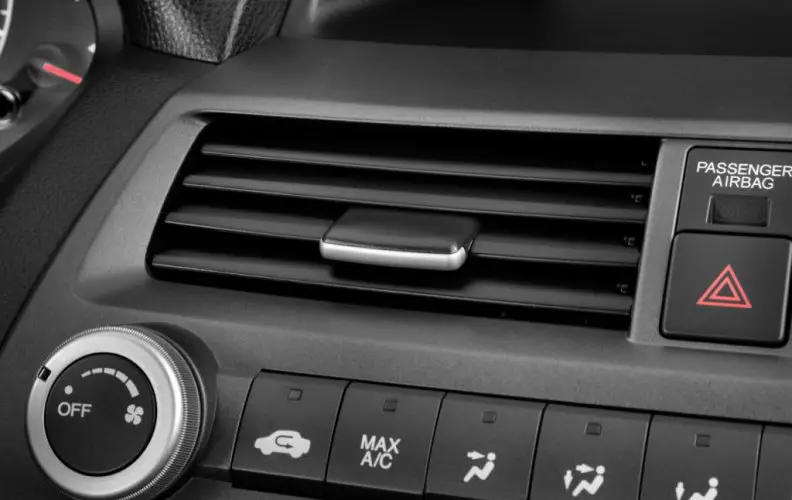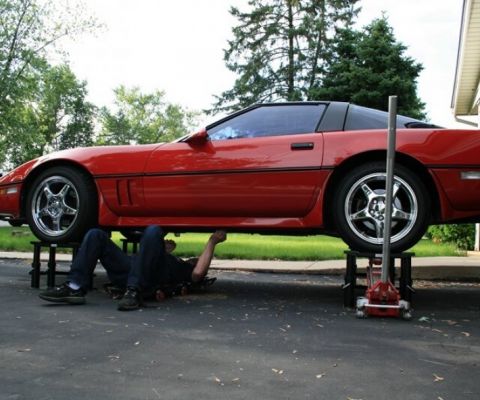15 Reasons to Read Your Car Owner’s Manual
 15 Reasons to Read Your Car Owner’s Manual
drivrzone.com
15 Reasons to Read Your Car Owner’s Manual
drivrzone.com
For most drivers, the owner’s manual is something they only ever reach to when something has gone wrong. Without a pressing reason to learn something specific about a car, many owner’s manuals will go years without ever being cracked open. People don’t think they need the manual; they’ve been driving around fine on their own, and that there’s nothing the manual can teach them except how to deal with a particular crisis. If that sounds like you, you should reconsider your stance. There are a ton of advantages that you can get out of reading your car’s manual. Here are just some of many reasons that reading it will improve your experience with your vehicle.

Have Help Setting Up Your Car
If you’ve bought a new car recently, you know how much technology it is jam-packed into there. Cars now are basically interactive robots on wheels, complete with a complex onboard computer that you can partially interface with. Getting the computer set up properly is vital to optimizing your experience owning the car, and if you try to figure it out yourself, there are plenty of ways that you could miss something or do something wrong. Follow the setup instructions in the manual the first time you get in your new car if you can. But even if it’s been a few years, you can still look at the setup instructions, and see if there might be something that you set up wrong.
Learn About Convenient Features
Those modern robot-cars now have tons of features that you can take advantage of. Bluetooth connection, onboard navigation, voice interface, who knows. As technology advances continue to accelerate, no one can really predict what the next leap forward will be. You can’t be expected to keep up with every single new feature that could be on your car, and if you never open your owner’s manual, you’ll have no idea on what awesome and convenient feature you might be missing out on. Only by reading through the owner’s manual can you be truly sure of everything that your vehicle is capable of.
Know When to Have Maintenance Performed
All different cars from all different companies will all have different maintenance schedules. You don’t want to wait too long to have your car checked or issues that would have been easy to solve will become exacerbated, but you also don’t want to have the car in too often and pay more than you need to. Every guide will come with a service schedule, so you can be sure of exactly when you need to bring your car in.
Keep a Service Record for Your Vehicle
When you’re having maintenance done on any particular part of your car, it’s best for the mechanic to know what’s been done there before. Most of us own the same car for years though, sometimes decades, and won’t be able to remember every single instance of service or have all of the paperwork from that long ago neatly collected. Most owner’s manuals will have a part near the back or the front where you can record instances of maintenance. Because your owner’s manual should always stay in your glovebox, you’ll have a permanent record of every instance of taking the car into the shop.

Find Out Which Fluids Work Best
Cars, like many mechanical machines, require a number of different fluids to function properly. Not just the fuel, but oil, too, and antifreeze, and washer fluid, etc. Not all oils are the same, though, nor any of the other fluids. You might get away with using the wrong one, but the only way to get the best performance out of your vehicle and keep it running as long as possible is if you use the proper fluids for that particular piece of machinery.
Know the Proper Tire Pressure
Most cars that have been made within the past few decades will have an indicator that will go off letting you know that you have low tire pressure. What that indicator won’t tell you, nor any other gauge on the car, is what the tires should be inflated to. It’s an important thing to know, as over-inflated tires can be just as dangerous as under-inflated ones. Check inside your manual to find out the right target pressure for every time you need to pull over at a gas station and fill up your tires with air.
Figure out What Indicators Mean
Some indicators are pretty straightforward. A wrench means you need service, a flat-bottomed tire means that your tires are low, so on. But some of those lights on your dashboard are like abstract art, and it’s anyone’s guess what they’re supposed to mean. If you read your manual, though, you’ll learn to speak car, and you’ll understand what your vehicle is trying to tell you whenever an indicator light goes off.

Know What Your Warranty Information Is
Especially if you’ve bought your car recently, you might be under warranty and not even know it. It might surprise you, but a number of people will end up paying for service that’s covered under their warranty, simply because they never thought to check it. That’s your warranty, you should take advantage of it, otherwise, you’re basically passing up on free money.
Set Up Reminders for Yourself
Some newer cars have ways to schedule reminders for yourself, so if you’re the type of person who generally lets appointments slip, you might want to try it. You can schedule alarm lights to go off at a predetermined point to let you know that you need maintenance, or an oil change, or whatever.
Be Aware of Any Safety Advice
Driving every car is different; sometimes, there are safety considerations beyond the typical ones that come along with operating a two-ton death machine on public roads. Since a car accident is the single most likely thing to kill you if you don’t make it to old age, knowing all safety information available from your manual makes you that much less likely to become a statistic.
Drive Your Car Better
Some of you are probably skeptical that reading a book could make you a better driver, but it’s true. Just like guides will contain information about more safely using a car, they can also contain information about ways to drive it more efficiently, or tendencies that the car might have. Reading the manual will improve your relationship with your car, and make you better at understanding how to drive it.

Solve Problems Efficiently If They Come Up
If you’re reaching for the manual after something has gone wrong on a road trip, you’re in for hours of reading and searching to find an answer, possibly in a snowstorm, a downpour, or blistering heat. If you’ve already read the handbook, then you’ll have some knowledge to draw upon. Possibly, you’ll be able to take care of the issue armed just with the information you’ve learned. If not, then you’ll still be better equipped to find the proper answer in the manual, and deal with the problem quickly and efficiently.
Take Care of Simple Processes Yourself
Sometimes, you don’t need to go to a mechanic to take care of small things. A headlight out, a spark plug that needs changing, whatever it may be, there are numerous small fixes that a reasonably dedicated layperson should be able to deal with on their own. These small fixes usually aren’t even that time-consuming, and the difference between buying a couple parts at an auto parts store and paying for maintenance at a garage is massive. Skip the bill, and deal with those sort of things on your own, using the manual to show you how.
Help You with Modifications
In case you’re the type of person who likes to modify their vehicle, you definitely need to read the guide thoroughly before doing so. Modifying a vehicle properly involves understanding what the vehicle needs and what it’s capable of. If you try to modify your car without checking the specifications in the manual first, you could end up with something that doesn’t work, or even worse, you could do catastrophic damage to your car.
Never Be Taken Advantage Of
It’s a shame, but some auto shops are more than willing to make up fixes and parts in order to make more money off of an unwary customer. If you know what your car consists of and what it needs to be working properly, then you are much less likely to be taken advantage of when you do need to go to the mechanic. Read the owner’s manual, and be a more educated consumer.
Reading the owner’s manual might be a bit tedious, and no one’s idea of an exciting read, but it’s one that could have serious positive consequences for you. Don’t miss out on all of the advantages you could get from reading the handbook; whether you’ve had your car for a few years or it’s brand new, get on reading that handbook now.
Sources
- Team-BPH – 10 Reasons You Should Read Your Car’s Owner’s Manual
- Autoguide – Why Reading Your Vehicle’s Instruction Manual is So Important
- Your Mechanic – The 10 Most Important Things in Your Car Owner’s Manual











